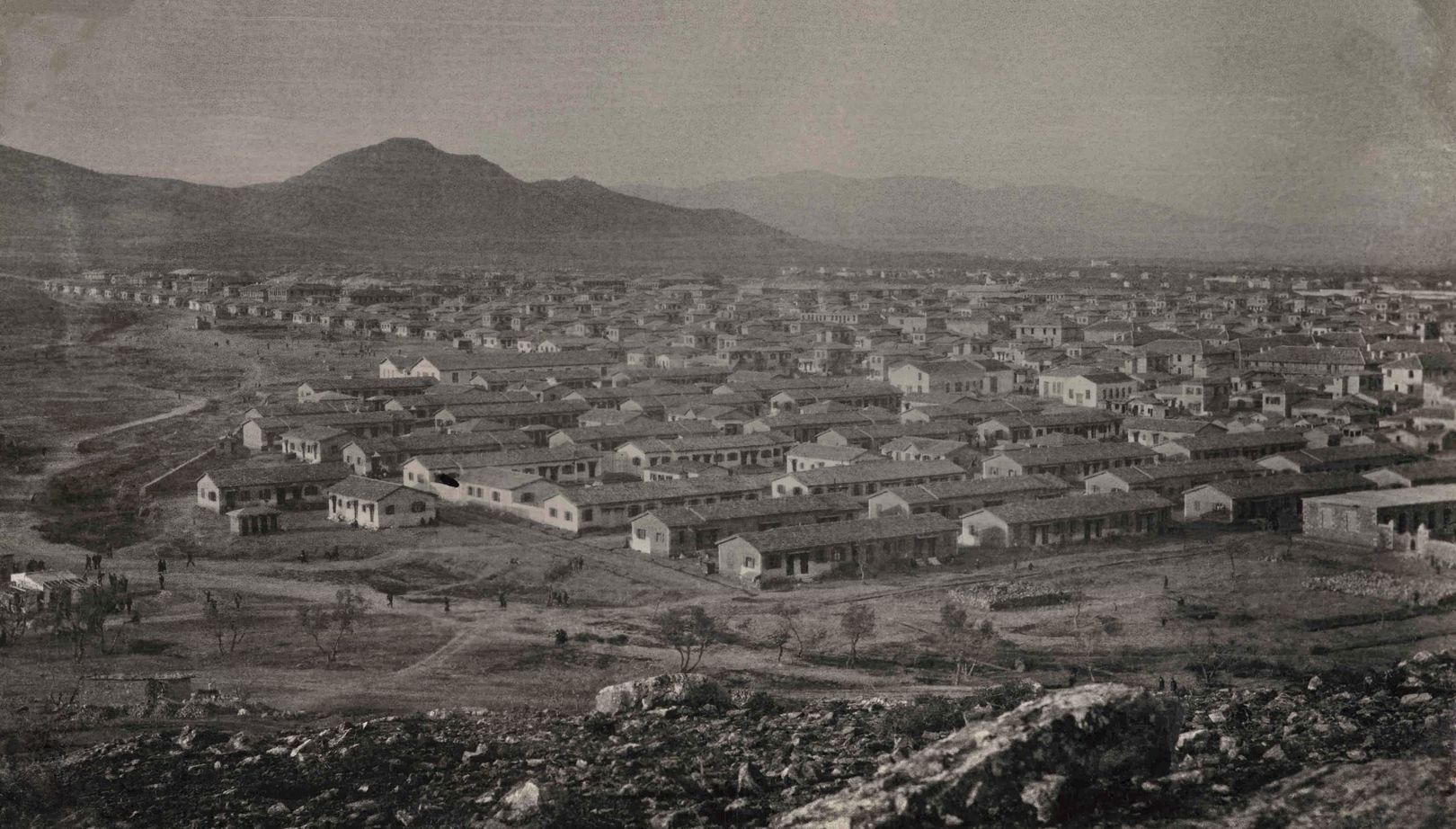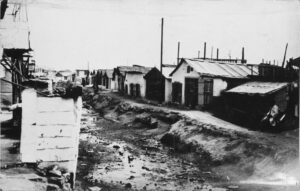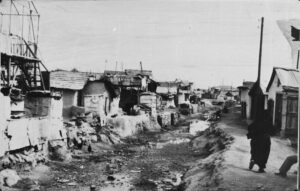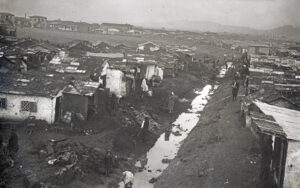Makeshift neighbourhoods on the edges of the city
City
Migration Period
City Narratives
Date
Category
Full Description
Refugee settlement was the greatest challenge and the most pressing problem that the state apparatus needed to resolve after September 1922. Refugees had to be distributed across the Greek territories and secure housing and employment. Essentially, the central housing policy which was followed consisted of four options: 1) settlement in the dwellings constructed by the Refugee Relief Fund and the Ministry of Welfare, 2) long-term accommodation in commandeered buildings, 3) self-housing without state intervention, and 4) self-housing with state aid. The refugees who chose the third option were the most affluent ones, who managed to settle within the urban fabric of Athens and Piraeus using their own resources, but also destitute refugees who settled on empty land which was then requisitioned and expropriated by the government. As Vika Gkizeli points out, ‘There were those who could not and those who would not settle in the refugee settlements and the expropriated properties. According to the Quarterly Report by the League of Nations, by 1927, about 35,000 refugee families had built houses in cities and villages in Macedonia and the wider area of Athens and Piraeus using their own funds. The urban space around Athens and Piraeus became filled with makeshift neighbourhoods and organised refugee settlements. The state-sanctioned refugee settlements were built next to the tents and the makeshift hovels, only to then be surrounded by new makeshift dwellings erected by more newly-arrived refugees.
These new residential clusters shared many similarities. For example, the most common type of dwelling in all these settlements was the tin and wood shanty, while their residents also shared common problems and deprivations (communal toilets, lack of water supply and electricity infrastructure). In 1927, these settlements were accommodating more than 13,700 families. In a report, the Refugee Settlement Commission (EAP) described these people’s living conditions. The refugees ‘who are living in residential blocks where they have constructed dwellings with their own funds are even more pitiful. There are settlements where, if you look at the cluster of buildings, you get the sense that you are in an endless dog kennel rather than a human village. There are dwellings made out of clay or wooden planks which are sometimes no more than 4 or 5 metres long. Some of the roofs, covered as they are with pieces of tin containers or the so-called tar-paper, let the rain in at various places. Under these conditions, some three, four, or even five or six people crowd together to spend the night on the muddy floor. There are blocks where the narrow passages that function as streets intersect with foul-smelling open sewers, in which stagnant water is filled with excrement and refuse’.
In the wider area of Piraeus, tens of makeshift residential clusters were built around the centre of the city just a few weeks after the arrival of the refugees in September 1922. Some of these clusters developed into fully-fledged neighbourhoods, with the makeshift shanties and hovels remaining in use for years. The first makeshift residential cluster of Nea Kokkinia was erected on the northern boundaries of the Municipality of Piraeus, on the banks of the Kanapitseri stream. The tents gradually gave way to makeshift dwellings and then to more permanent structures. The initial makeshift settlement survived for decades despite the existence of a central residential plan which was formulated specifically for the area and led to the creation of Nea Kokkinia. Today, the stream, known as Souda, and the two streets now called Tzavella and Belogianni together constitute the boundaries between two cities, Piraeus and Nikaia. For decades, though, they formed a border delineating two different worlds, the urban and the refugee world. Despite the fact that the few refugee houses that still survive have been restored and expanded, they still remind us of how hectically the refugee arrival imposed a new reality, but also, conversely, how slow and inconsistent the pace of the rehabilitation and settlement process was. The last makeshift hovels in Souda were demolished as late as the beginning of the 1960s, part of a housing rehabilitation scheme by the Ministry of Social Welfare that aimed at rehabilitating the last urban refugees who were still living in makeshift dwellings.
At the intersection of the streets known today as March 7th, Tzavela, and Belogianni, in what used to be the commercial centre of the original refugee enclave, there was a bridge that ensured the unimpeded flow of vehicles to and from the settlement during the first years of its existence, especially during the winter months when the water levels of the stream would rise. There were also several wooden pedestrian bridges along the settlement to allow the residents, workers and visitors to cross from Palaia [Old] to Nea [New] Kokkinia and vice versa. When the last makeshift dwellings were knocked down at the beginning of the 1960s, these bridges were demolished too, making way for the contemporary configuration of the streets Tzavela and Belogianni.
Bibliography
Vika Gkizeli, Social Transformation and the origins of social housing in Greece, 1920-1930, Athens 1984.
League of Nations, Greece: Quarterly Report of the Refugee Settlement Commission, Geneva 1924–1930, issue 14 (1927).



